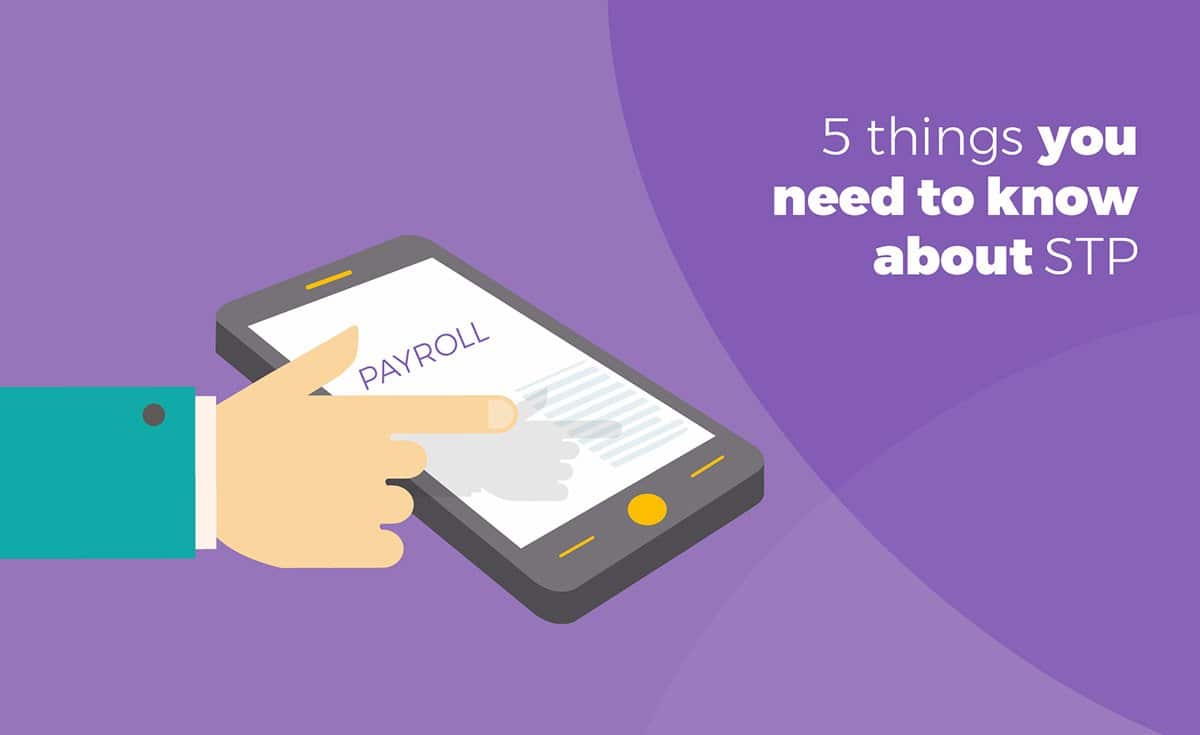Changes in legislation often bring with them a unique mix of business, compliance, and technology considerations. Single touch payroll (STP), a new payroll reporting mandate rolling out soon from the Australian Tax Office (ATO), is no exception. To ensure that your payroll function – and your overall business – keeps happily ticking along, now’s the time to start thinking about your STP compliance and other legal obligations, how to reap the rewards of this new way of doing business, and the technology you’ll want in place to best cater to your needs.
The sooner you get started, the better prepared you’ll be. Start planning now to save yourself a lot of time and stress, and enjoy a seamless transition to STP; these following five questions and answers can help.
5 things you need to know about STP in Australia
1) What is Single Touch Payroll (STP)?
First things, first. What is the ATO mandate about? The new regulation means that now, every time you do a pay run, you also need to send the ATO information at the same time on your employees’ salaries and wages, pay as you go (PAYG) withholding, and superannuation. To meet these new reporting obligations, you’ll need to either change or upgrade your current payroll software this financial year to a digital, STP-enabled payroll solution.
2) Who does STP impact?
STP will not yet affect everyone. For now, it’s mandatory for companies the ATO deems ‘substantial employers’ – that is, medium to large businesses with 20 or more employees. (Pending additional legislation, the STP compliance mandate may eventually extend to employers with 19 and fewer employees.)
If your employee numbers are hovering around the 20-employee mark, you’ll need to do an official headcount – not the full-time equivalent (FTE) – on 1 April 2018. If, on this date, you have 20 or more employees, you’ll need to do your payroll reporting through STP. It’s important to keep in mind, too, that once you’re a substantial employer, you’ll have to continue reporting through STP even if the number of employees you have drops below 20.
For those of you in the 20-employees-and-over category, you’re the ones who need to be proactive in evaluating your current payroll processes and in replacing or upgrading your payroll technology to an option that ensures STP compliance.
3) When does STP go into effect?
For employers with 20 or more employees, the STP reporting mandate officially goes into effect on 1 July 2018. So basically, you’ve got the rest of this financial year to get up to date and compliance-ready. It’ll be here before you know it, so now’s the ideal time to get all your ducks in a row. Why wait till the last minute? Prepare now to save yourself the mad rush and stress later.

If the legislation passes concerning companies with one to 19 employees, those companies will likely have to conform to the new STP compliance regulations on or before 1 July 2019 – (Download Free STP Handbook)
No matter how many employees you have, the capability for STP reporting became available as of 1 July 2017, so if you’d like, you can opt in to begin payroll reporting this way as early as now.
Remember: There’s no need to toss and turn over this change. The ATO recognises that this is a transitional time. Employers will understandably make mistakes as they get to know this new way of working. So, if you haven’t quite lined up all your ducks, you can relax a bit knowing there is a grace period of 12 months from penalties. During this time, you’ll have the chance to conduct any necessary quality assurance and correct any mistakes to an STP report (such as false or misleading statements).
4) Have other countries implemented STP?
Australia isn’t the first to require STP compliance; we’re following the lead of the UK, which implemented its own version of STP, PAYE RTI (pay-as-you-earn real-time information), in April 2013 – with a great deal of success.
According to UK government research into employers’ experiences at the end of the first full year of the PAYE RTI rollout, 78% of employers said it was easy to comply with the new requirement to run their payrolls before or at the same time they paid their employees.
As for PAYE RTI end-of-year (EOY) processes, 62% of employers found it easy to manage them, and 80% thought doing so was either easier than they expected or at least in line with their expectations. Though a majority of employers of all sizes judged dealing with EOY under RTI as ‘fairly easy’ or ‘very easy’, it was the large employers – those with more than 250 employees – that found it the easiest (76%).
5) What are the benefits of STP?
Like the UK, Australia stands to gain from the implementation of STP, and the benefits are many:
- You’ll be compliant! After all, who wants legal or tax-related headaches?
- You’ll save time by streamlining and simplifying your organisation’s payroll function and other processes, too.
- You no longer have to submit an EOY PAYG report to the ATO.
- If they don’t have one already, your employees can set up a myGov account (a simple, secure account for accessing government services online) and will be able to conveniently view their payment summaries – wherever and whenever they’d like. This type of empowerment and transparency is great for employee engagement.
- The required STP-enabled technology often provides other handy features as well, such as data-driven advanced payroll reporting, payroll history storage, automatic legal compliance updates, and integration with your other organisational systems. Another bonus? For businesses with turnover of less than $2 million, the government is offering a $100 non-refundable tax offset when you buy your STP-ready software.
Over to you
Ready or not, single touch payroll Australia is imminent. Wouldn’t you rather be ready? Lead the charge in embracing the ATO’s new mandate. Starting to prepare now means you can properly get your head around the transition, put the necessary technology in place, and tick all those ever-important STP compliance boxes. You’ll be an STP pro by the time 1 July 2018 rolls around.
{{cta(‘f273af7a-5191-4788-a3ac-62b402fcc939’)}}

